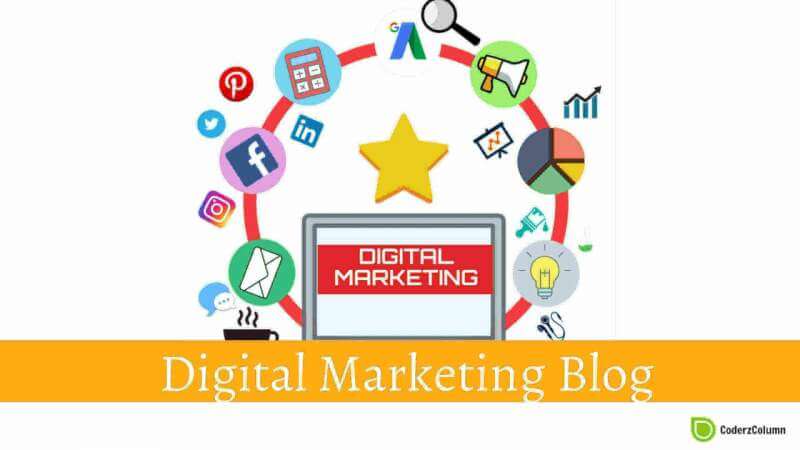
14 Essential Digital Marketing KPIs to Track For Your Next Campaign¶
Website Traffic: Website Traffic is not just a metric; it's a vital window into your brand's online presence. It serves as a gauge of your reach and visibility in the digital landscape. Beyond the raw numbers, it provides insights into the effectiveness of your digital marketing strategies. Analyzing website traffic enables you to assess whether your efforts in SEO, content marketing, and social media are effectively drawing potential customers to your online platform. It's the starting point for understanding whether you're reaching your target audience and prompts adjustments to your content and promotion tactics to enhance your digital footprint.
1. Organic Search Traffic:¶
Organic Search Traffic, often considered the holy grail of digital marketing, signifies visitors who discover your website through search engines without paid advertising. This KPI dives deep into the effectiveness of your website's SEO efforts. It's not just about attracting visitors; it's about attracting the right visitors—those actively seeking what you offer. A high volume of organic search traffic indicates that your website ranks well for relevant keywords, making it easily discoverable by your target audience. It's a testament to the quality and relevance of your content, confirming your brand's authority in your niche.
2. Click-Through Rate (CTR):¶
Click-Through Rate (CTR) is more than just a number; it's a direct reflection of your digital marketing campaign's engagement level. It represents the percentage of individuals who didn't just see your ad or email but were intrigued enough to click on it. CTR is your litmus test for compelling content and messaging. A high CTR indicates that your ad copy, email subject lines, and creative elements are striking a chord with your audience. It's an indicator of resonance – how well your content aligns with the interests, desires, and pain points of your target demographic. Precisely tracking CTR empowers you to refine your marketing materials, making them more captivating and persuasive to your audience.
3. Conversion Rate:¶
Conversion Rate, a pivotal KPI, measures the effectiveness of your digital marketing campaigns in turning visitors into customers or achieving other desired actions. It quantifies the percentage of visitors who take a specific action, such as making a purchase, signing up for a newsletter, or filling out a contact form. A high conversion rate indicates that your website and marketing messages are compelling and persuasive, nudging visitors towards your intended goals. Tracking this KPI helps you identify bottlenecks in your conversion funnel and refine your strategies to boost your overall conversion performance.
4. Cost Per Click (CPC):¶
Cost Per Click (CPC) is a crucial metric for assessing the efficiency of your paid advertising campaigns. It represents the expense incurred each time a user clicks on one of your ads. A lower CPC indicates that you're getting more value for your advertising budget. By closely monitoring CPC, you can make informed decisions about budget allocation, bid strategies, and ad targeting to maximize the return on your advertising investments.
5. Cost Per Acquisition (CPA):¶
Cost Per Acquisition (CPA) is the compass guiding your efforts to acquire new customers. This KPI calculates the cost associated with acquiring a single customer through your marketing efforts. Keeping your CPA in check is essential for ensuring that your marketing campaigns remain profitable. A declining CPA suggests that you're efficiently converting prospects into paying customers, while an increasing CPA signals the need for adjustments in your marketing strategies.
6. Return on Investment (ROI):¶
Return on Investment (ROI) is the North Star of digital marketing KPIs. It provides a comprehensive view of the profitability of your marketing campaigns by comparing the revenue generated to the costs incurred. A positive ROI indicates that your marketing efforts are yielding a return greater than your investments. It's the ultimate measure of campaign success, guiding decisions on where to allocate resources for maximum impact. Calculating ROI enables you to optimize your marketing mix and prioritize campaigns that deliver the best returns.
7. Customer Lifetime Value (CLV):¶
Customer Lifetime Value (CLV) is a forward-looking KPI that estimates the total revenue a customer is expected to generate throughout their engagement with your brand. This metric shifts the focus from one-time transactions to long-term customer relationships. A high CLV signifies that your customers are not only making initial purchases but also returning and making additional purchases over time. It underlines the importance of customer retention and nurturing relationships to maximize the value each customer brings to your business.
8. Email Open Rate:¶
Email Open Rate is a pivotal metric for email marketing campaigns. It represents the percentage of recipients who open your emails, indicating the effectiveness of your subject lines and email content in capturing attention. A high open rate suggests that your emails are resonating with your audience, compelling them to explore your message further. By fine-tuning your email content and segmentation based on open rate data, you can enhance the impact of your email campaigns and boost engagement.
9. Bounce Rate:¶
Bounce Rate is a metric that provides insights into the user experience on your website. It tracks the percentage of visitors who navigate away from your site after viewing only one page, indicating that they did not find what they were looking for or encountered a usability issue. A high bounce rate can be a red flag, signaling that improvements are needed in your website's design, content, or navigation to keep visitors engaged and encourage them to explore further. Monitoring and reducing bounce rates are essential for improving user satisfaction and site performance.
10. Social Media Engagement:¶
Monitoring Social Media Engagement is paramount in assessing the effectiveness of your social media marketing efforts. This KPI encompasses likes, shares, comments, and overall interaction with your social media content. It goes beyond follower counts to evaluate the level of active engagement your brand generates. High social media engagement indicates that your content resonates with your audience, fostering a sense of community and loyalty. By analyzing engagement metrics, you can refine your social media content strategy, tailoring it to your audience's preferences and interests.
11. Customer Churn Rate:¶
Customer Churn Rate is a critical KPI that measures the percentage of customers who stop using your product or service over a specific period. It's a vital metric for subscription-based businesses and SaaS companies. A high churn rate signals that you're losing customers faster than you're acquiring them, impacting your revenue and growth. Reducing churn is often more cost-effective than acquiring new customers, making it essential to understand the reasons behind customer attrition and implement strategies to improve retention.
12. Click-Through Conversion Rate:¶
The Click-Through Conversion Rate focuses on the conversion rate of users who clicked on a specific element, such as a Call to Action (CTA) button, within your digital content. This KPI is especially relevant for assessing the effectiveness of specific conversion-focused elements within your web pages or emails. It helps you pinpoint which elements are most persuasive in prompting users to take desired actions, allowing you to optimize your content and design to drive higher conversion rates.
13. Mobile Traffic Share:¶
With the increasing prevalence of mobile devices, tracking Mobile Traffic Share has become crucial. This KPI quantifies the percentage of visitors accessing your website or engaging with your content through mobile devices such as smartphones and tablets. It's a reflection of the mobile-friendliness of your website and the significance of optimizing your digital presence for mobile users. As mobile traffic continues to grow, understanding this metric is pivotal for ensuring a seamless user experience across all device types.
14. Customer Satisfaction (CSAT):¶
Customer Satisfaction (CSAT) is a qualitative KPI that gauges the level of satisfaction customers experience with your products or services. It involves collecting feedback through surveys or post-purchase interactions. A high CSAT score indicates satisfied customers, while a low score signals dissatisfaction. Happy customers are more likely to become brand advocates, driving positive word-of-mouth and repeat business. Monitoring CSAT provides insights into areas for improvement and helps you prioritize customer-centric initiatives to enhance overall satisfaction.
Conclusion:¶
In conclusion, these 15 essential digital marketing KPIs are the compass and roadmap to success in the digital realm. By delving deeper into each metric's significance, businesses can gain a more profound understanding of their marketing performance, make informed decisions, and optimize their strategies for greater effectiveness and growth.
 Dolly Solanki
Dolly Solanki
![]() Want to Share Your Views? Have Any Suggestions?
Want to Share Your Views? Have Any Suggestions?
If you want to
- provide some suggestions on topic
- share your views
- include some details in tutorial
- suggest some new topics on which we should create tutorials/blogs
Want to Get your Website on the First Page of Google SERP?
Reach out to CoderzColumn's digital marketer Dolly Solanki (dollyborade07@gmail.com). We can help you get a better ranking for your website.



 Want to Share Your Views? Have Any Suggestions?
Want to Share Your Views? Have Any Suggestions? KPIs, Campaign, digitalmarketingKPIs, organicdata, organictraffic, adcampaign, googleadscampaign, facebookadscampaign, costperclick, returnoninvestment, conversionrate, clickthroughrate
KPIs, Campaign, digitalmarketingKPIs, organicdata, organictraffic, adcampaign, googleadscampaign, facebookadscampaign, costperclick, returnoninvestment, conversionrate, clickthroughrate
